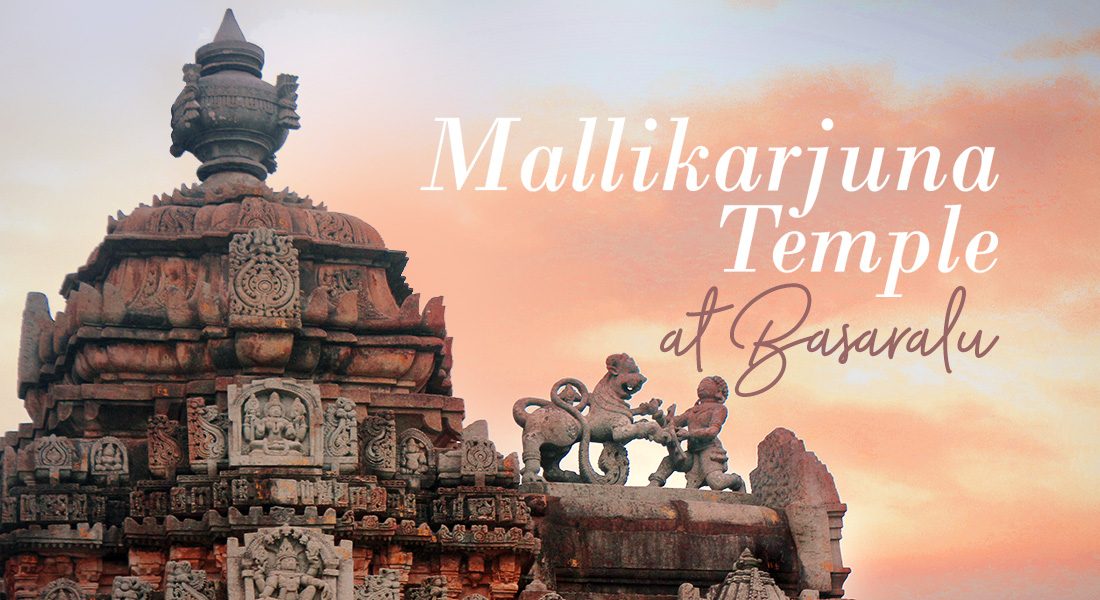
Mallikarjuna Temple at Basaralu
Basaralu is a small village in Mandya taluk and was an agrahara during ancient times known as Basurivala. The village is famous for the artistic and beautiful temple of Mallikarjuna built here in the year 1234 by Harihara Dandanayaka who was a minister of Hoysala king Narasimha II.
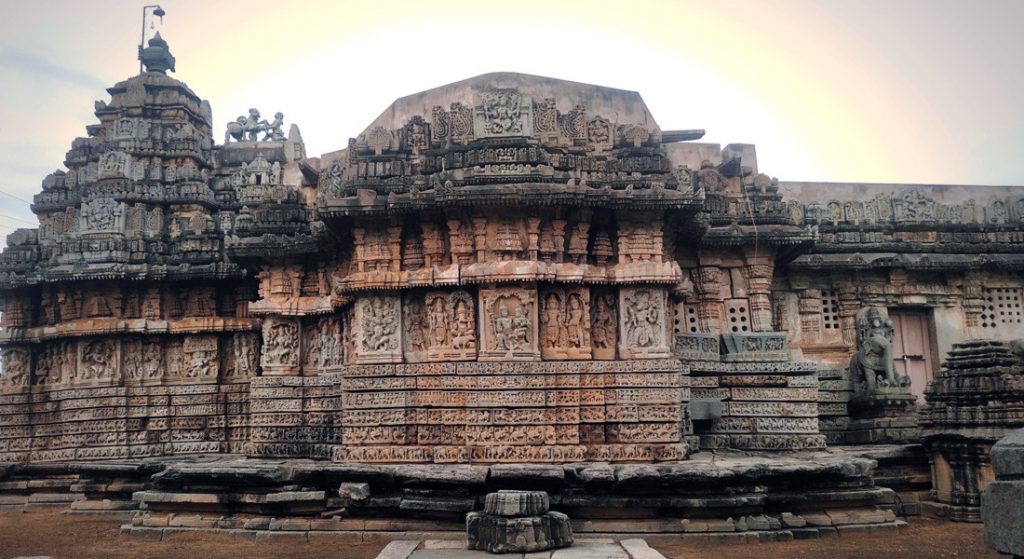
This trikuta temple consists of three garbhagruhas (sanctums), an antarala to each garbhagruha, a navaranga (common to all the three garbhagruhas), mukha mantapa, Nandi mantapa, and dwara mantapa. Temple has two entrances, one from the south and one from the north, which open into Navaranga. Both these entrances have attractive mukha mantapas. The temple embodies all the characteristics of the classical Hoysala style. The foundation, mantapas, outer walls, friezes, niches, pattikas (horizontal friezes), sculptures, eaves, shikhara (tower), bhuvaneshwaris, pillars, door jambs, and lalata (lintel) designs all ooze Hoysala craftsmanship at its best.

Built on an adhishthana (foundation) of about 3.5 feet height, the temple has six horizontal friezes running along the base of the outer wall on all sides, interrupted only by the two entrances. A row of well-carved elephants is seen in the first frieze, followed by horses mounted by soldiers in the second. The third row has a depiction of the Hoysala emblem all along. Episodes from the Ramayana, Mahabharatha, and Bhagavatha are intricately carved in the fourth frieze. The fifth and sixth friezes depict Makara (a crocodile) and Hamsa (a swan), respectively.
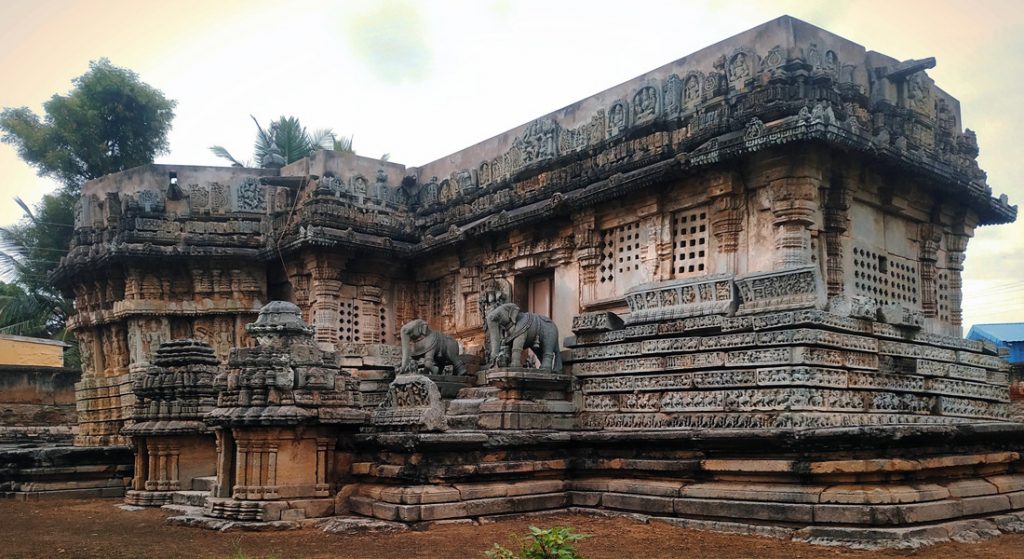
The temple has double eaves, one hovering above the lower part of the outer wall and the other outstretched over the upper part. The upper part of the wall has routine pillar and tower designs. Whereas the lower section has a total of 103 sculptures of mesmerising beauty and craft lined up all along the outer wall. Some of these sculptures are shown under beautifully designed canopies. These marvellous creations indicate the iconographic knowledge of our sculptors and sthapati (one who is in charge of temple construction). Some of the sculptures are Sarasvati, Bhairava, Narasimha, Ganesha, Nataraja, Durga, Lakshminarayana, Shiva, Arjuna shooting at the fish tied above him by looking at its reflection in the water at his feet, Ravana lifting Kailasha mountain, Shiva-Parvati and Chaturmukha Brahma.
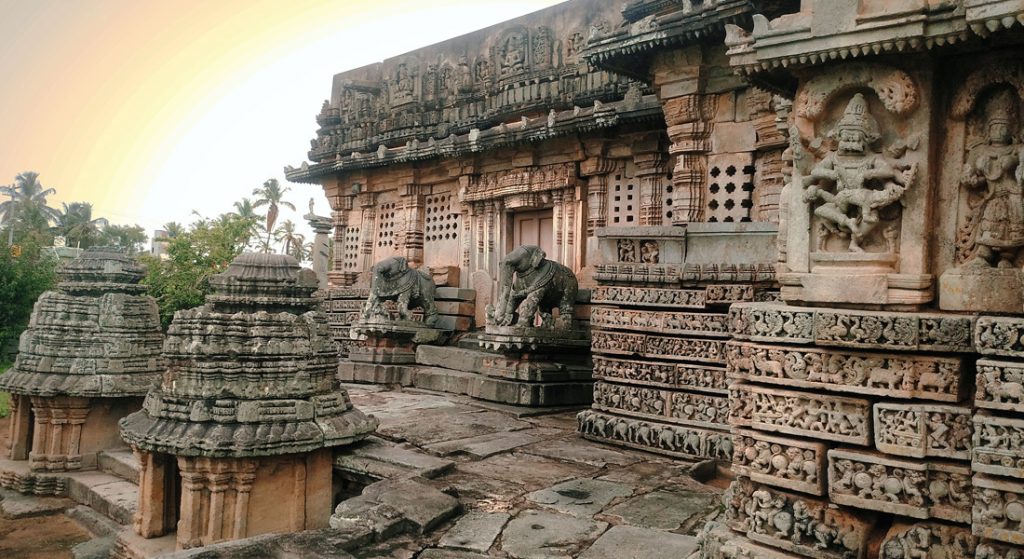
The entrances have miniature temples on either side, followed by elephants and dwarapalakas (door keepers). Of the original four dwarapalakas only one is remaining. On either side of the entrance, pierced windows are seen. The shikhara has three talas (levels) depicting various forms of Shiva. At the top is an inverted padma (lotus) with a kalasha on top of it. In front of the Shikhara, is a stunning piece of craftsmanship depicting the Hoysala emblem of Sala fighting with a lion.
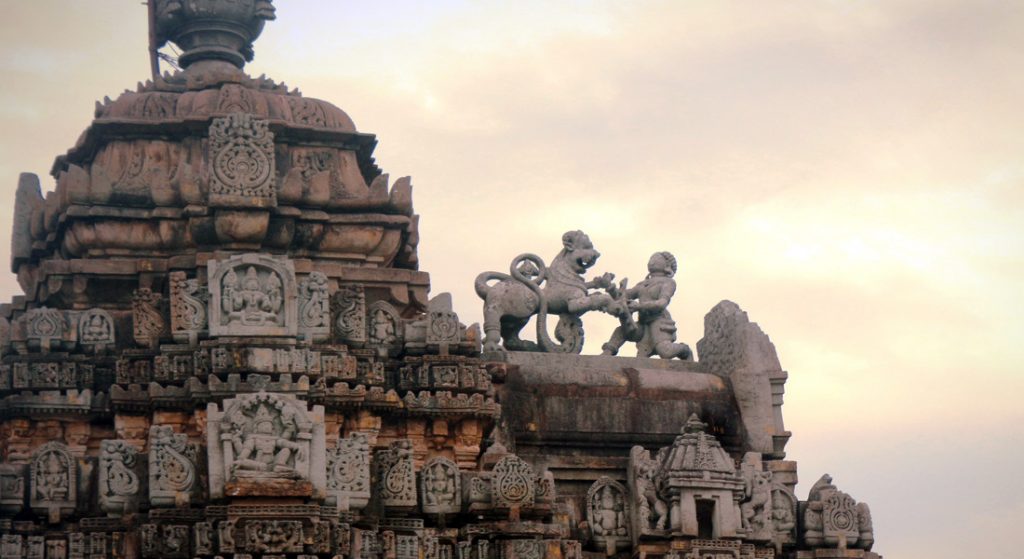
The navaranga has some niches and four attractive pillars. Idols of Mahishamardini, Saraswati, the Saptamatrika panel, and Ganesha are seen in these niches. The pillars of the navaranga have moulded pedestals and square bases. The bhuvaneshwaris (ceiling portion between the pillars) are beautifully depicted. The central Bhuvaneshwari stands out for its perfection and art. A Shivalinga is seen in the west garbhagruha. The other two garbhagruhas do not have their original installations at present, which probably were Shivalingas. Sculptures of Surya and Naga-Nagini can be seen now. The door jambs of all the garbhagruhas are attractively carved out in typical Hoysala art style.
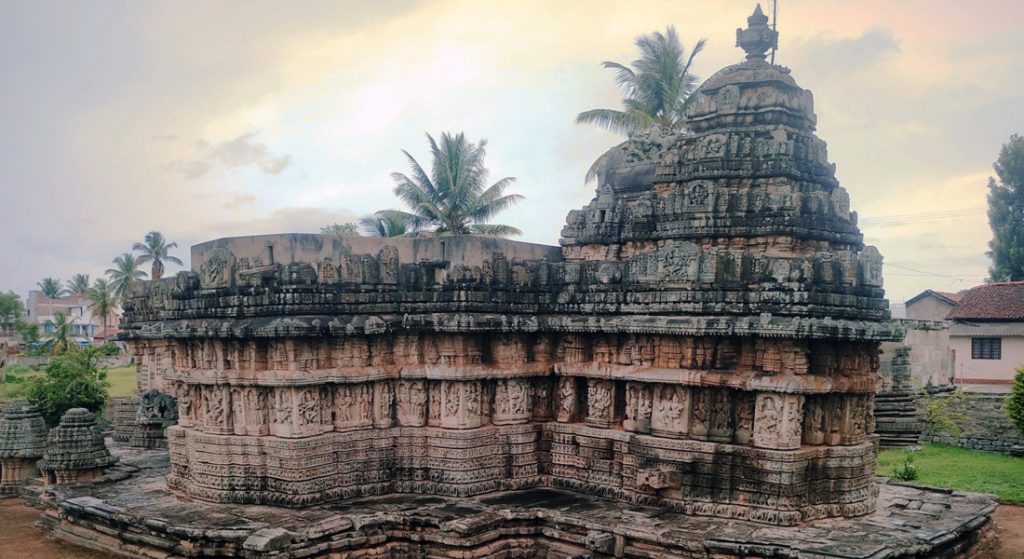
Article and Photos by Rakesh Holla
*The views expressed in the article are those of the writer alone. Chaloindiaworld.com does not own any responsibility in any form if there is any wrong representation of facts or places.
**The copyright of all the photos and text content of this article is owned exclusively and only by Rakesh Holla, the author of this article. No one else has any right to copy/publish/print/download any photo(s) or text content of this article, either in part or in full, and use them for personal, professional, or any other purpose. For any such usage, prior written consent from the author is a must.
Key words/ Labels: Karnataka, Temples, Ancient, Monument, Temple, Hoysala, Mandya, Basaralu, Basral, Basralu


